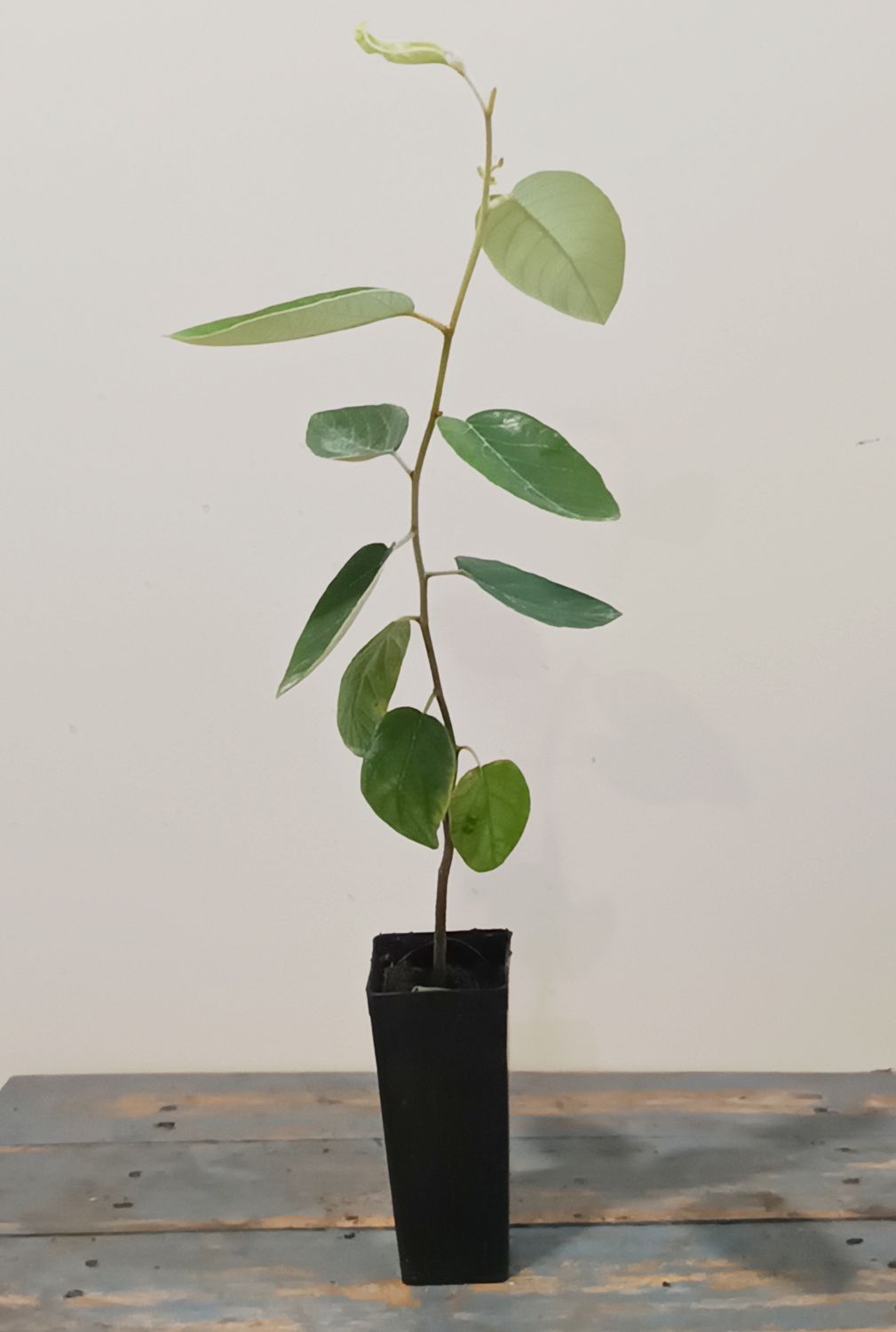Soap Tree
Common Names: Red Ash, Soap Tree, Sarsaparilla, Coopers Wood
Red Ash (Alphitonia excelsa) is a highly valued and resilient Australian native tree that grows anywhere in WA from Broome to Perth metro. It is a fast-growing pioneer species known for its dense, rounded canopy and the unique red underside of its glossy leaves. Great for suburb growers who want a large, effective shade tree that is tough, versatile, and attracts native wildlife. It brings in not only birds, butterflies but lots of insects as well and has amazing uses, from cleaning, medicinal and even traditional fishing.
Features:
Ideal prune height range: 4-8m (Easily managed in suburban gardens)
Growing conditions: 6.0 to 7.5 (Acidic to neutral)
Shade or full sun: Full Sun to Light Shade
Minimum pot year 5: 60L pot
Time to fruit age: 3-5 years from seed.
Red Ash trees are quick-to-establish and highly adaptable. They produce clusters of small, fragrant cream flowers followed by small, round black fruits that attract native birds. The tree is highly drought-tolerant once established and can handle a wide variety of soil types, from sands to heavy clays. Red Ash is best grown directly in the ground to accommodate its mature size, making it a great choice for large gardens and streetscapes.
Medicinal and Fishing uses
This plant, including its leaves, berries, bark, and roots, has a variety of traditional uses across different cultures.
For Indigenous Australians:
Fishing:
They crushed the leaves and berries to use as a fish paralysis.
The saponin poison from the Soap Tree berries works like a special soap.
How it stuns fish temporarily: The soap mixes with the water and gets into the fish through its gills (like how we breathe with lungs). This stuns the fish and makes it float to the top. It attacks the fish's breathing, not its body. Similarly, if the fish is moved into a clean body of water it's likely to recover if done quickly. We do not suggest this to be an ethical or even legal way to catch fish for food or aquarium collection and it will kill indiscriminately especially when used in small bodies of water.
Why the meat is safe: When people eat the fish, the small amount of soap that might be in the meat is broken down easily and is insignificant.
Medicine (External):
A paste made from crushed leaves mixed with water was applied to the head to relieve headaches and treat sore eyes.
Medicine (Topical/Gargle):
Infusions made from the bark and root were rubbed onto the body to soothe muscular aches and gargled to cure toothache.
Cleaning:
The leaves, which contain saponin, can be crushed and lathered to create a natural bush soap.
In Borneo:
Skin Treatment: The sap collected from under the bark is added to bath water to help treat skin diseases.
Interesting Notes:
The Red Ash is famous for its wood and bark, which can produce a sarsaparilla-scented, soap-like lather when rubbed with water, hence the name "Soap Tree." Its fruit is a food source for native birds and its foliage hosts the caterpillars, making it potentially a sacrificial tree, reducing predation on veggies.
Fruit is toxic. Some sources suggest the ripe fruit can be eaten raw in tiny amounts but they are often described as having a sour, aromatic taste. Toxic due to saponin content. Not much info is available on the methods to leech out toxins.
Limited stock. Pickup from Parkwood, WA. Delivery to Perth Metro only.
Keywords: Red Ash, native tree Perth, drought-tolerant tree, fast-growing tree, shade tree, Australian native.
